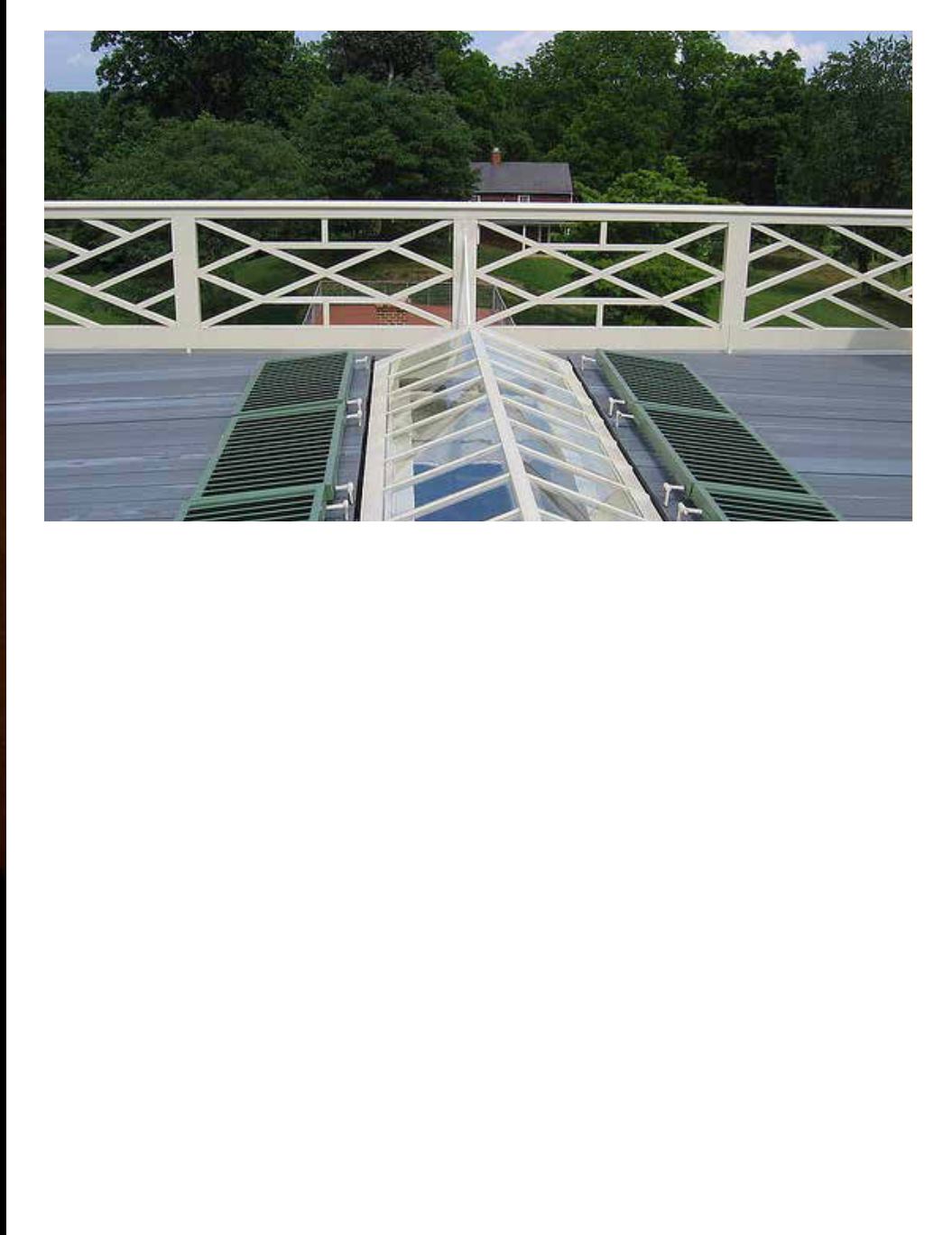
Jefferson inherited the property from his father-in-law
in 1773, and it became his “lake house”… a country retreat,
far removed from the bustle and pressures of his political
and law careers. Although he never lived there full time,
he did visit three or four times a year for extended periods.
The centerpiece of this 4,819-acre estate is the octagonal
home, conceived, designed and built by Jefferson himself,
and which still stands today. The non-profit Corporation
for Jefferson’s Poplar Forest, whose goal is to preserve and
restore all aspects of this National Landmark, to the extent
that it is possible, now owns the house and grounds. That
would include buildings, fences, roads, and landscaping.
A tour of the home speaks of Jefferson’s innovative
architectural style. The dining room occupies the exact
center of the main floor plan, with a doorway in each of its
four walls that leads to adjoining rooms. It’s an extremely
simple, unique design that is economical and practical.
The central dining room also functions as a center hallway
of sorts, which allows for easy movement throughout the
home, yet wastes no space in doing so.
The noticeable absence of a kitchen is a sign of the
times in which it was built. Back then, the plantation
kitchen was a separate building. This was done in order to
minimize the risk of a fire burning down the main house,
and to keep from adding excessive heat to the main house
in warm weather. It was also a convenient way of keeping
the kitchen workers, usually slaves, at a distance from the
people in the main house.
Bear in mind that this great statesman and noted
attorney, who is well remembered for his architectural
genius, considered himself a farmer by profession. Jefferson
was a rare breed of man: a scholar, who enjoyed putting his
education to practical use. He spent an enormous amount
of time reading and learning, so that he might excel at his
passion for farming. He studied horticulture, and invented
a new type of more efficient plow (a design that he refused
to patent so that other farmers might freely make use of it).
The design won him an award from the French Society of
Agriculture in 1809.
Visitors to Poplar Forest are charged a modest
admission fee, which avails them of regularly scheduled
tours, access to archaeological and historical exhibits, and
the opportunity to walk the grounds with a hand-held GPS-
enabled device that acts as a tour guide of the grounds.
The reason for my recent visit was the annual
“Conversations” program, which is a truly remarkable
experience. Bill Barker, is an actor who has a degree in
history fromVillanova. He has been appearing as Jefferson
for some 30 years now, after an initial appearance at
Independence Hall in Philadelphia. His strong physical
resemblance of Mr. Jefferson is but one aspect of his
credibility. He studies relentlessly, to the point where he
assumes the persona and character of the man with what
appears to be astonishing ease.
11


